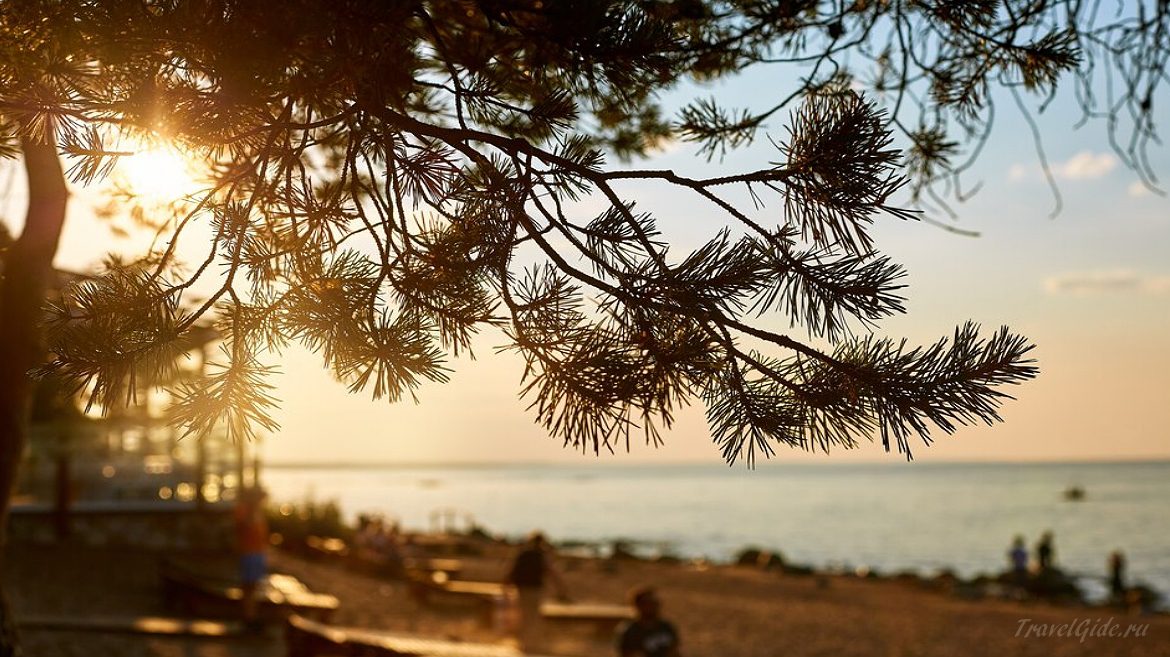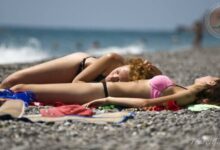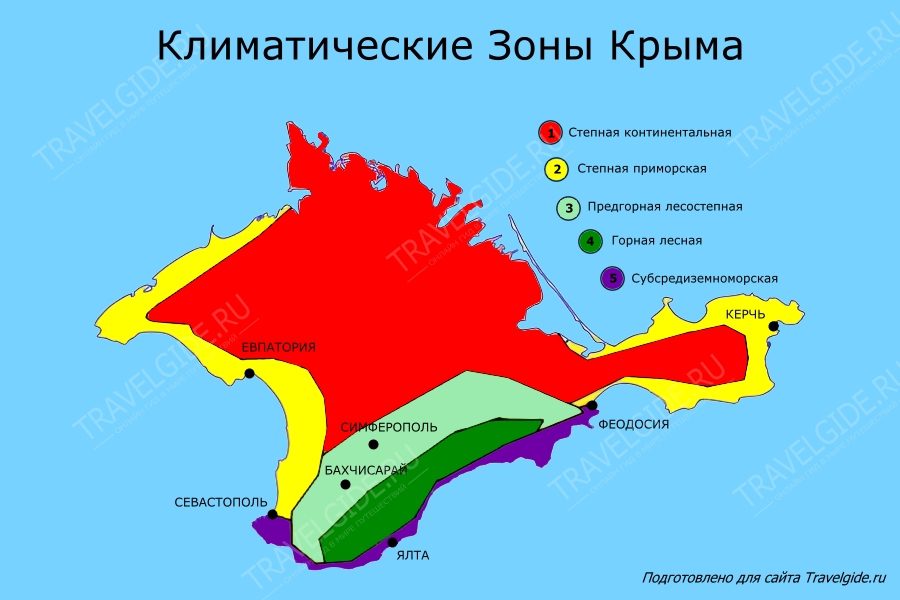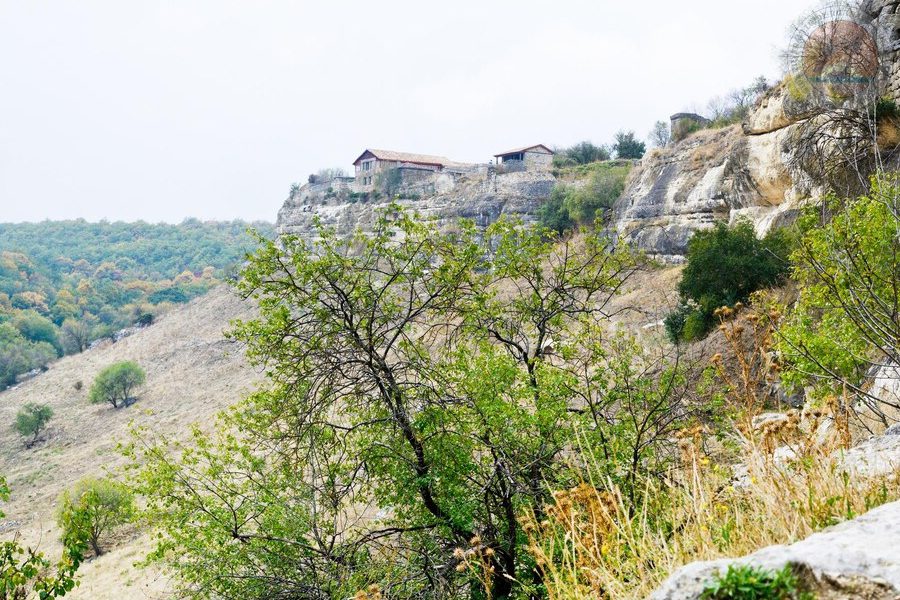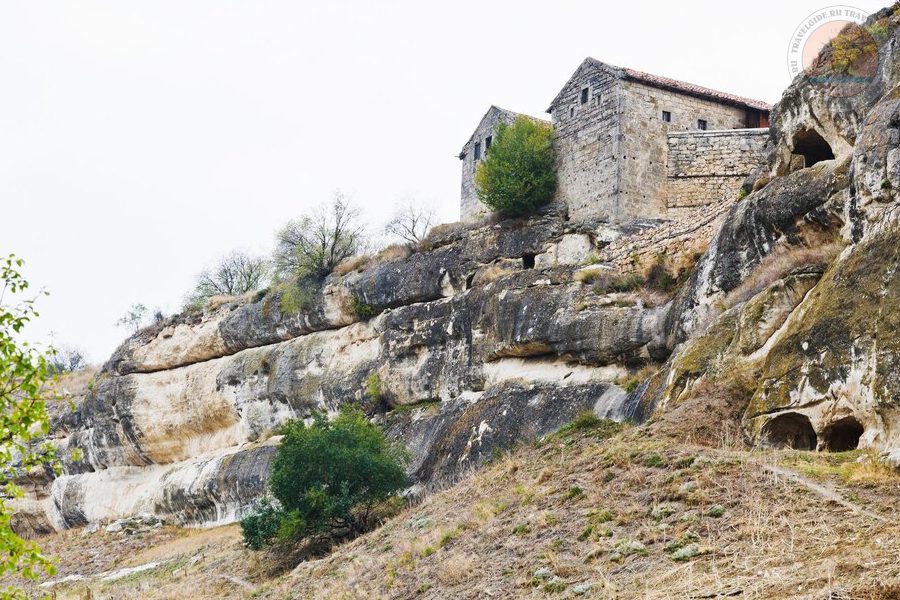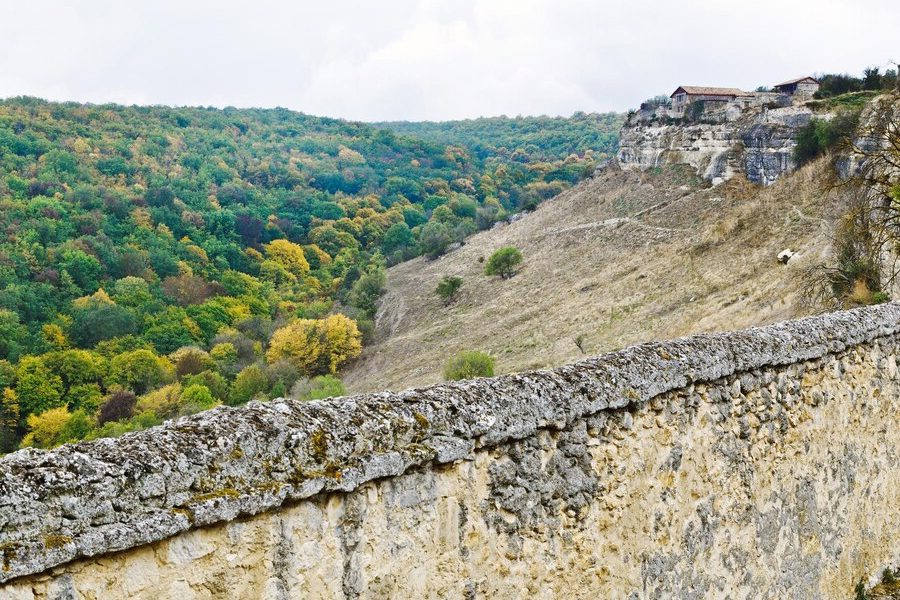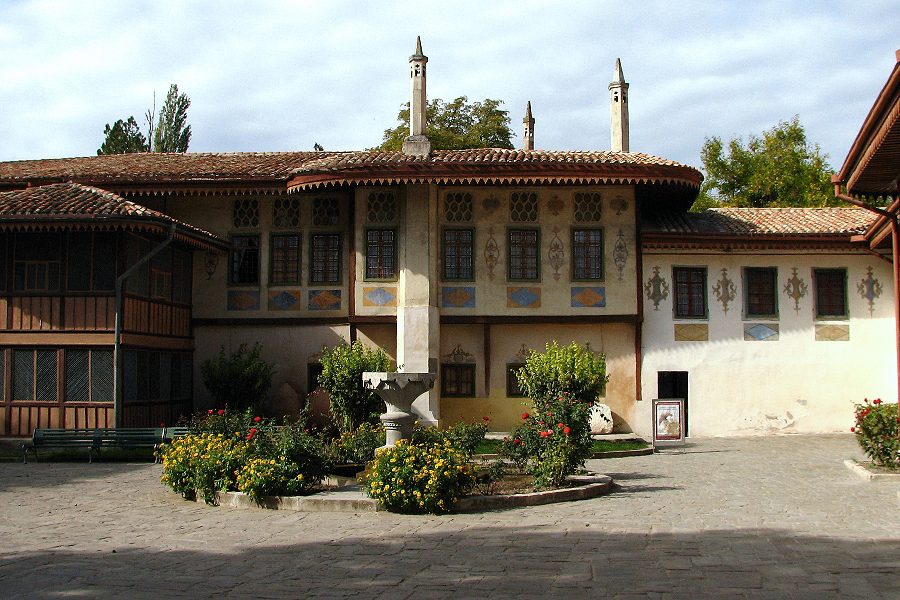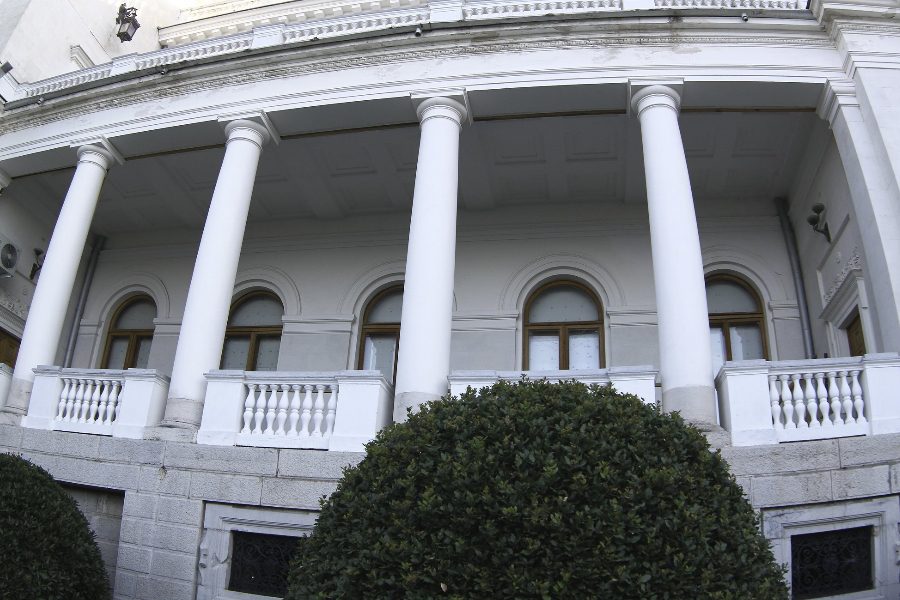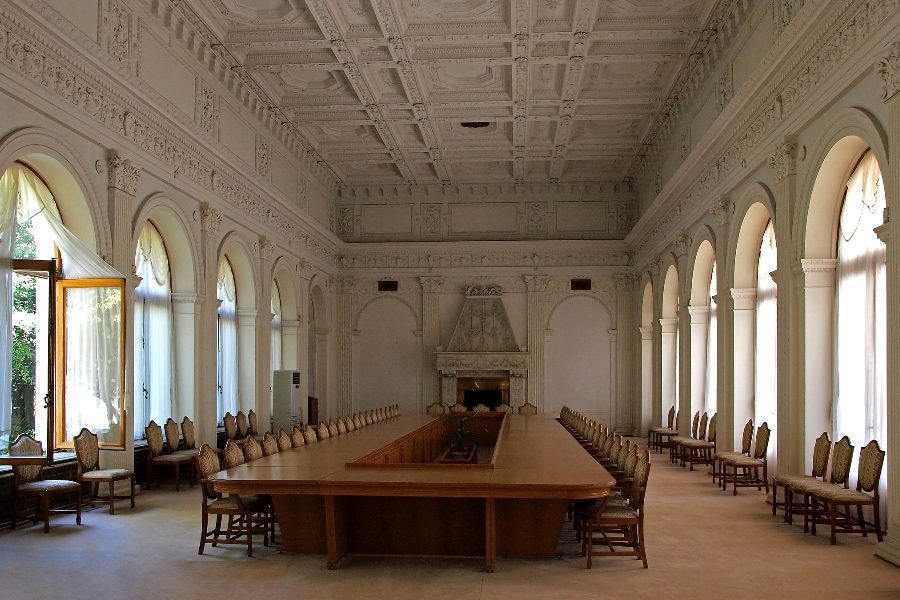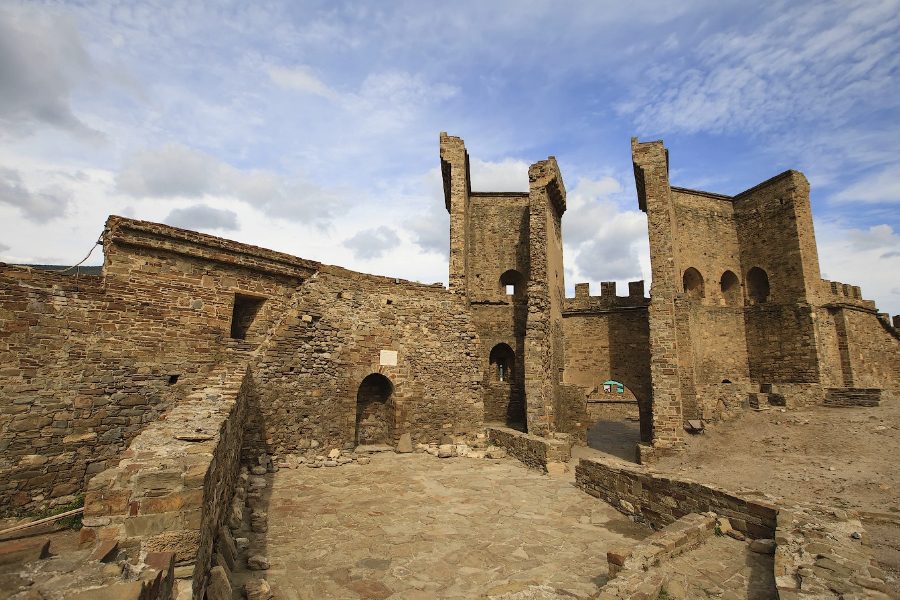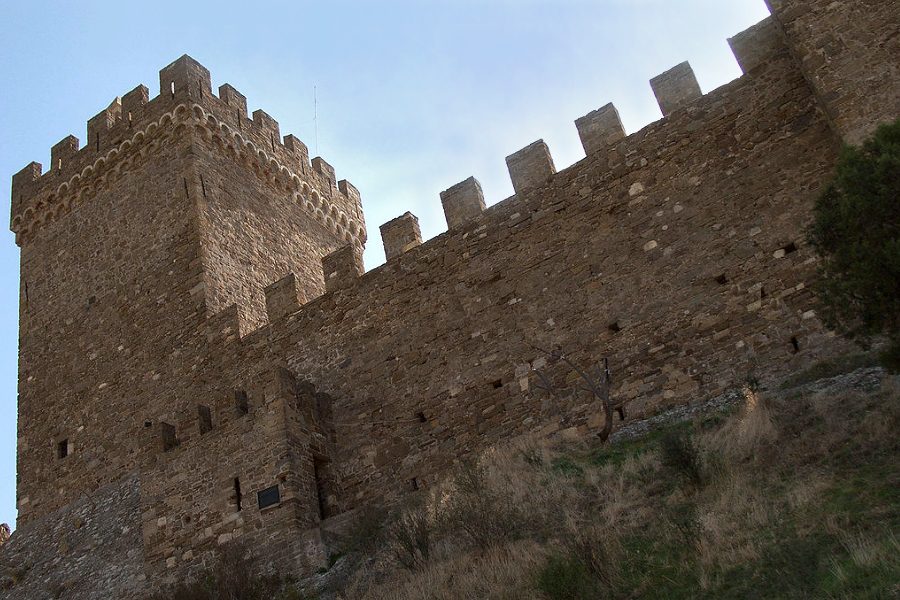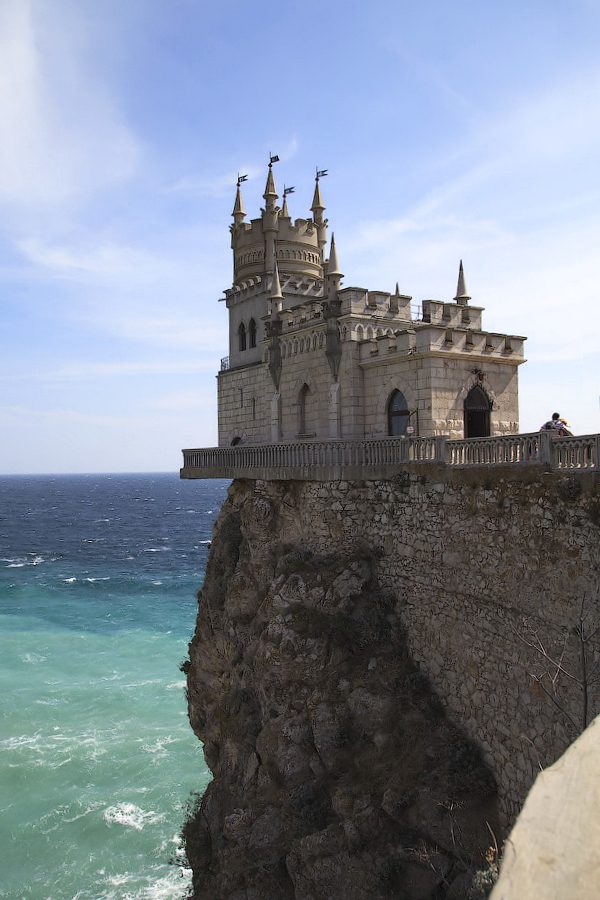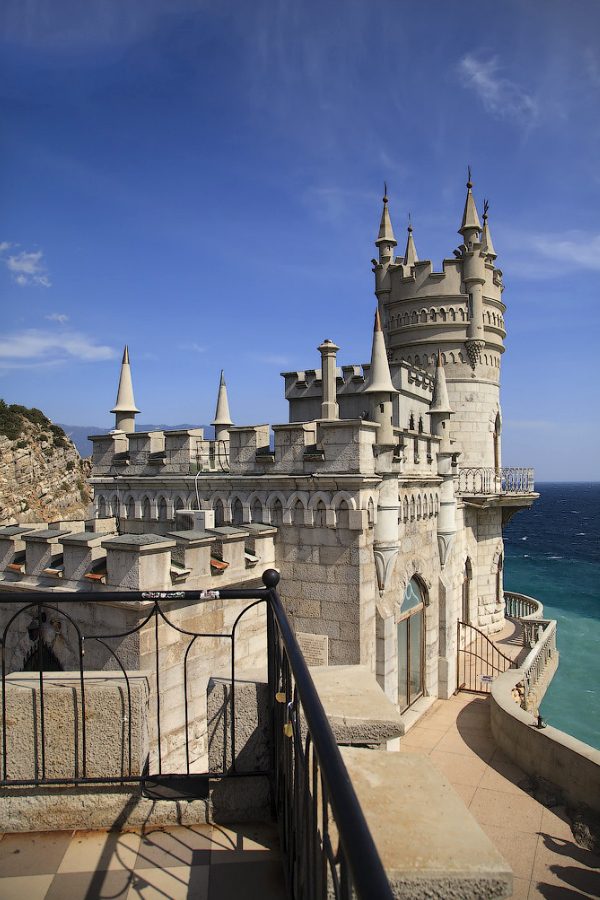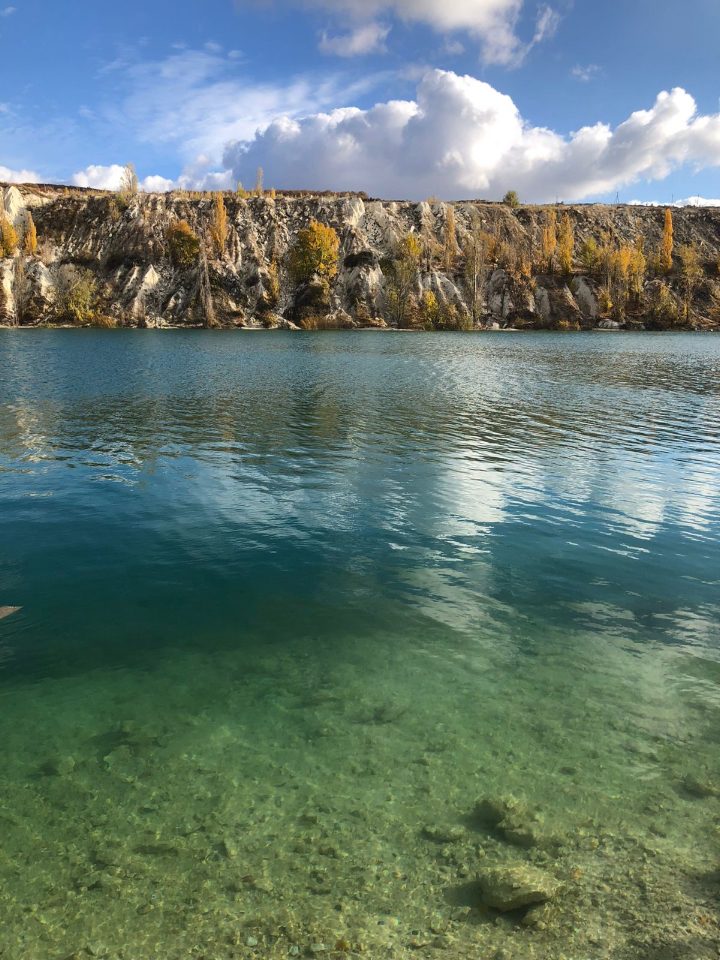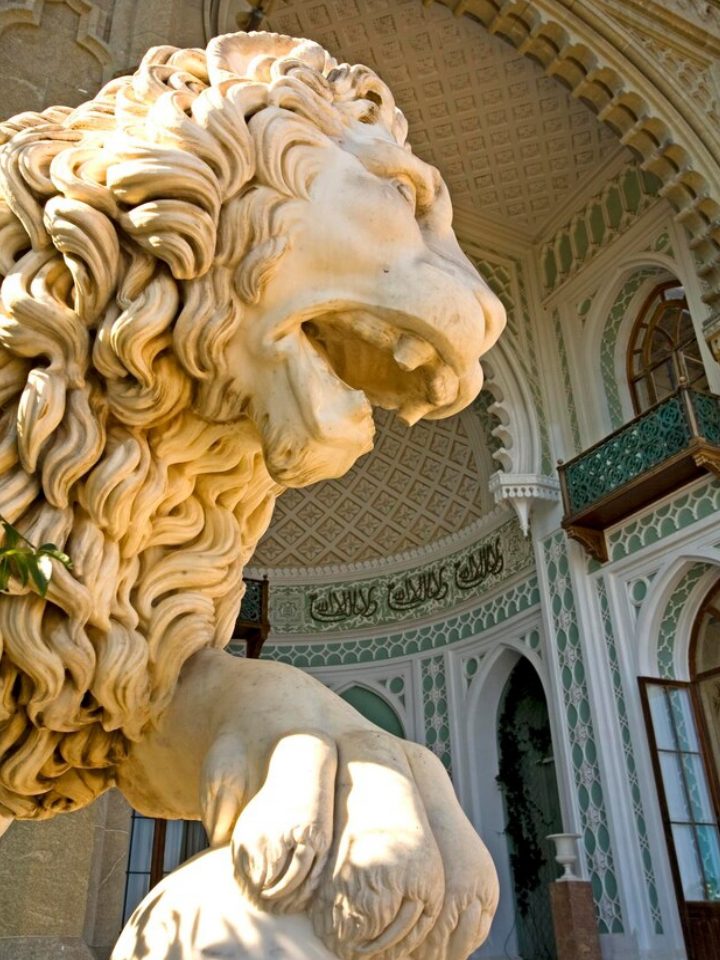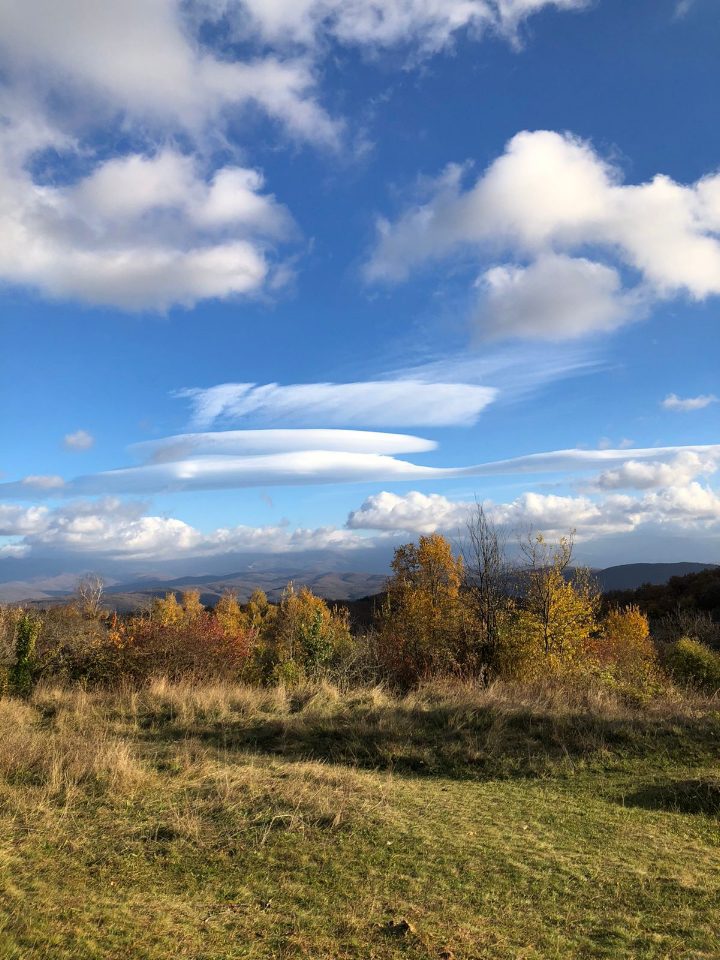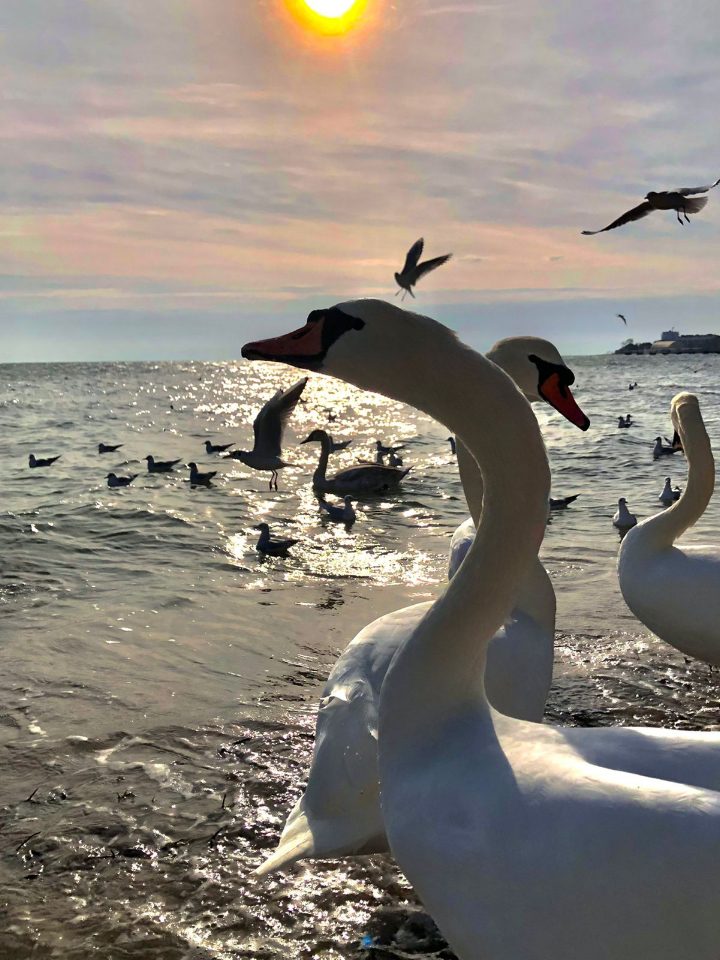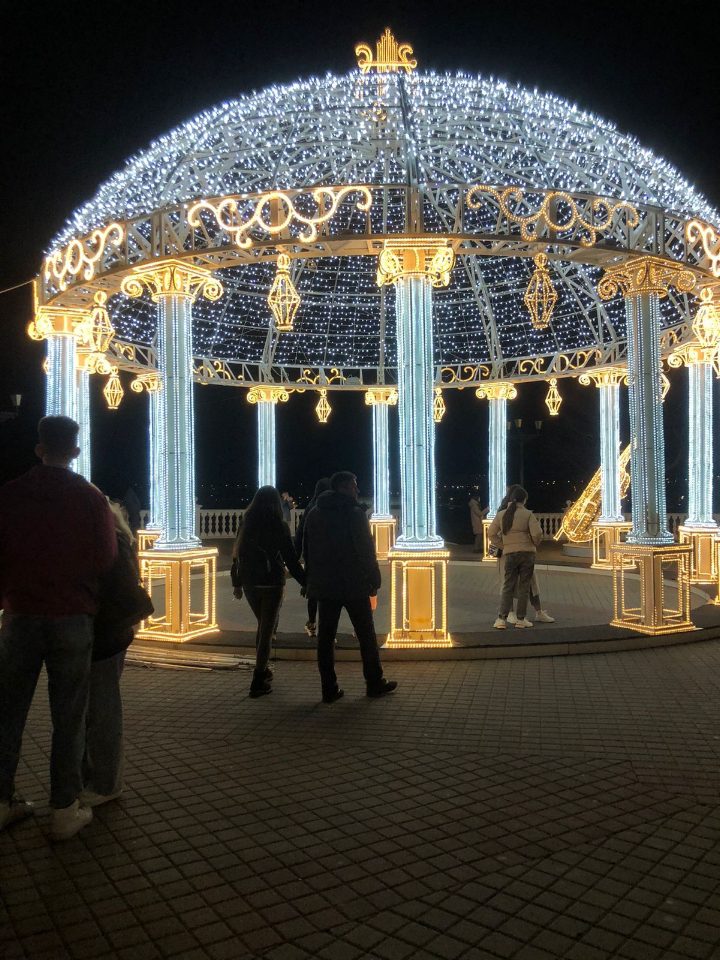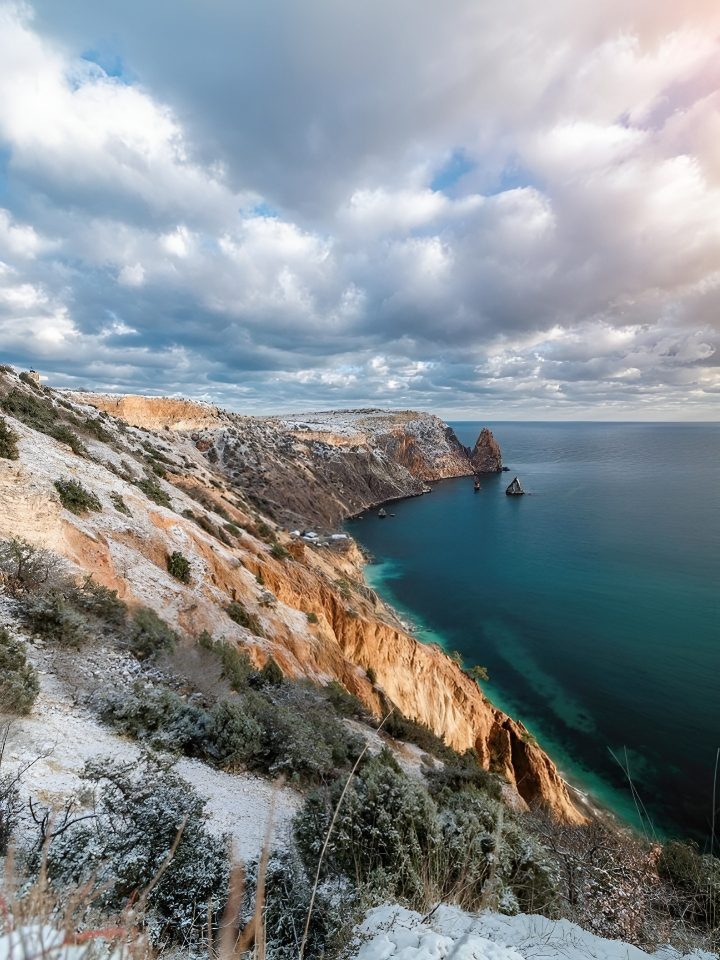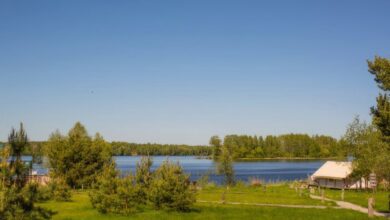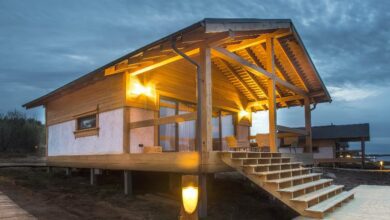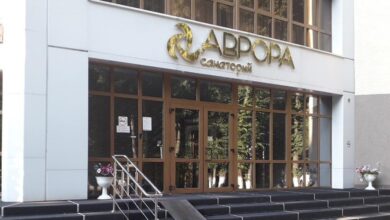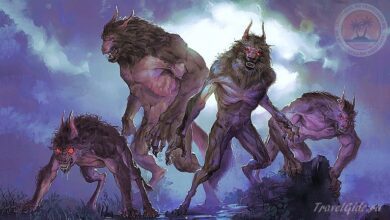Безусловно, что в сознании подавляющего большинства почитателей отдыха на Крымском полуострове, этот самый отдых ассоциируется с летом, пляжами, горячим песком и жарким солнцем. Но может стоит рассмотреть возможность поездки в Крым в зимнее время года? Не станет ли это решение авантюрой и бессмысленно потраченным временем? В этой статье постараюсь ответить на эти и другие вопросы, связанные с зимним отдыхом в Крыму.
Курортные и климатические зоны Крыма
Начать следует с того, что общая площадь Крымского полуострова составляет более 26 тысяч км2. При этом следует учитывать, что его рельеф неоднороден и поэтому деление полуострова на курортные зоны определяется их географическим положением. Географическое положение территорий так же формирует климатические районы Крыма.
Полуостров далеко неоднороден как по температурному режиму, так и по общим погодным условиям, включая влажность, осадки, силу и продолжительность ветров, количество солнечных дней в году.
Исторически сложилось, что основные климатические районы Крыма в целом совпадают с его курортными зонами, но последние более обширны.
КУРОРТНЫЕ ЗОНЫ КРЫМА:
- Южное побережье полуострова;
- Предгорья и горы;
- Степная территория.
Курортные и климатические зоны неоднородны. В настоящее время выделяется пять макро регионов и двадцать микро регионов, каждый из которых имеет характерные температурные и другие климатические особенности.
Навряд ли микроклиматические регионы могут оказать существенное влияние на качество проведения отдыха, а вот знание особенностей пяти основных зон климата поможет сделать правильный выбор и не разочароваться в ожиданиях.
КЛИМАТИЧЕСКИЕ ЗОНЫ КРЫМА:
- Степная континентальная;
- Степная приморская;
- Предгорная лесостепная;
- Горная лесная;
- Субсредиземноморская.
Обязательно нужно отметить, что крымский климат не перестаёт быть лечебным ни осенью, ни зимой, что обусловлено его уникальным месторасположением. На южном побережье Крыма удачно объединились отдельные факторы: горный воздух, повышенный уровень естественной инсоляции, морской воздух и уникальная флора полуострова.
ОСОБЕННОКСТИ КЛИМАТИЧЕСКИХ ЗОН КРЫМА:
- Климат степной континентальной зоны характеризуется сухим и жарким летом и малоснежной зимой, в период которой температура окружающей среды может приближаться к -10 -15°С, но в среднем держится в пределах не ниже -3 -4°С.
- Климат степной приморской зоны мягче по сравнению со степным континентальным с повышенной влажностью и нередко сильными ветрами.
- Климат предгорной лесостепной зоны отличается от двух предыдущих более комфортной температурой в зимние месяцы. Близость к горам даёт определённую защиту территории от ветров, высокую влажность и обилие осадков.
- Климат горной лесной зоны сам по себе разнообразен, и определяется высотой местности над уровнем моря. Подножия гор обладают характеристиками климата примыкающих зон (предгорной лесостепной и субсредиземноморской). При первоначальном повышении высоты до пятисот метров влажность увеличивается. Зимы здесь можно охарактеризовать как мягкие. Выше — влажность уменьшается, а зимы становятся умеренно мягкими. На высотах более семисот метров влажность снова увеличивается, достигая своего максимума на вершинах, где климат характеризуется как прохладный.
- Климат субсредиземноморской зоны — это климат средиземноморья и субтропиков со всеми вытекающими последствиями. Жара, периодически дождливая погода и относительно небольшая влажность — основные характеристики лета. Зима так же отличается дождливостью, даже выше, чем в летнее время. Дневная температура в отдельные зимние месяцы может доходить до +15 +18°С и реже опускается ниже 0°С, при средних значениях +2 +3°С.
Преимущества зимнего отдыха в Крыму
Есть ли преимущества отдыха в Крыму в зимнее время года? Безусловно, хотя для многих они на первый взгляд не очевидны. Некоторые из них бесспорны для всех, а другие станут решающими для отдельной категории отдыхающих.
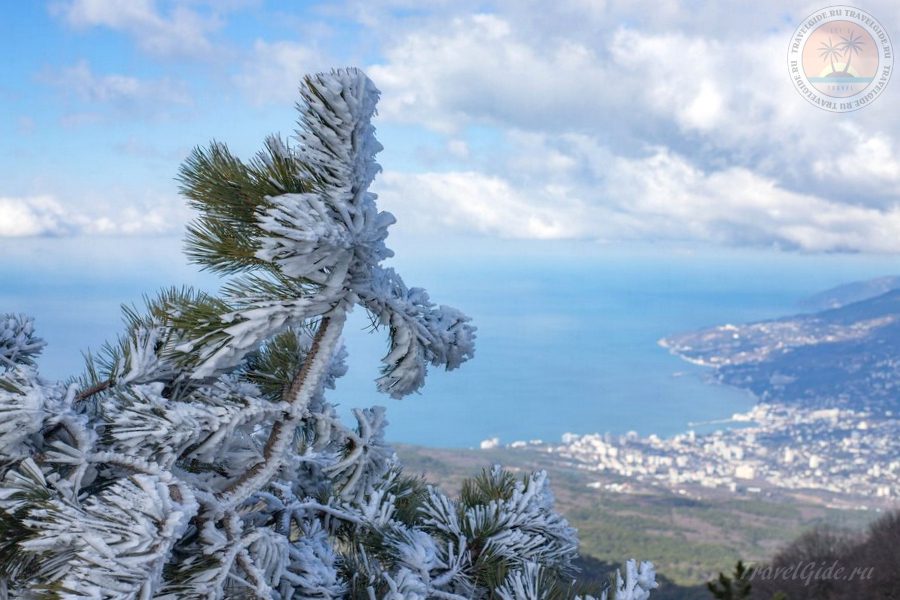
ПЛЮСЫ ОТДЫХА ЗИМОЙ НА КРЫМСКОМ ПОЛУОСТРОВЕ:
- Самое очевидное и бесспорное для всех — это существенное снижение цен на жильё в это время года. Причём речь идёт и о шикарных отелях, и небольших гостиницах, так же пансионатах, санаториях и частном секторе;
- Доступность популярных туристических объектов культурного и природного наследия. Отсутствие ажиотажа очередей и скученности;
- Широкий выбор активных видов спорта зимнего направления, включая катание на санках, тюбингах, лыжах, сноубордах. Самые популярные горнолыжные курорты – это гора Ай-Петри и Ангарский перевал;
- Возможность принять участие в фестивалях и праздниках, связанных с зимой. Тоже катание на санках или тюбингах нередко совмещается с различными конкурсами и представлениями, которые по желанию можно завершить чаепитием с ароматным крымским мёдом или парилкой в русской бане.
- Возможность увидеть исторические достопримечательности полуострова в новом свете. Например известный Дворец «Дюльбер» и его старинный ботанический сад просто восхитительны в период снегопадов.
- Если вы не относите себя к почитателям жары и не являетесь особым любителем столпотворений, то зимние месяцы — это идеальное для вас решение.
Недостатки зимнего отдыха в Крыму
Как у любой медали есть две стороны, так и у поездки в Крым в зимнее время есть свои плюсы и минусы. Но справедливости ради нужно сказать, что для кого-то эти минусы таковыми совсем не являются.
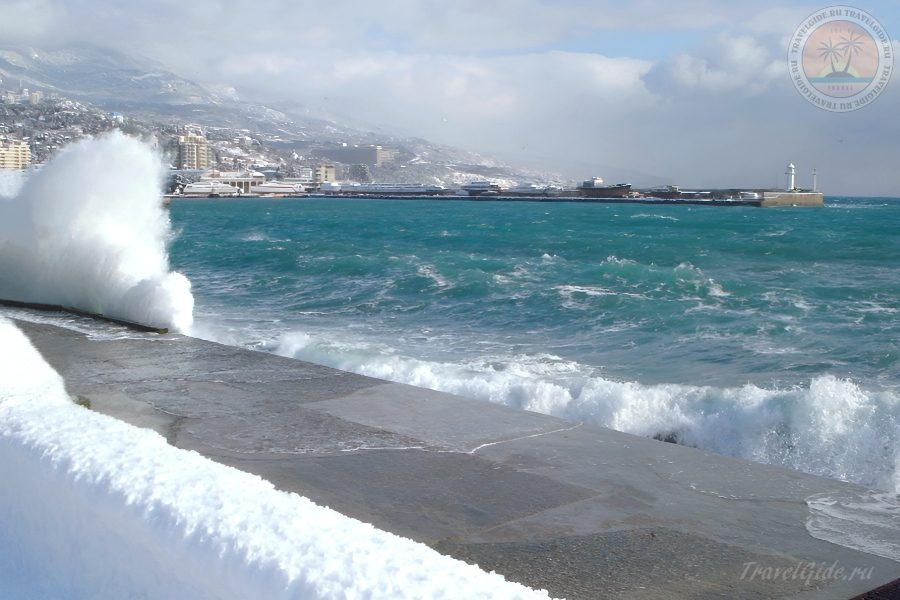
МИНУСЫ ОТДЫХА ЗИМОЙ НА КРЫМСКОМ ПОЛУОСТРОВЕ:
- Самый негативный факт, который останавливает любителей пляжного отдыха от поездки в зиму, это отсутствие возможности искупаться в море, а следом поваляться на тёплом песочке, наслаждаясь горячим юным солнцем;
- В связи с «межсезоньем» в туристическом потоке отдельные заведения питания, места развлекательной направленности могут быть закрыты или работать по сокращённому графику;
- Крымские зимы более дождливы, чем летние месяцы, а при температуре +5 +10°С в них мало приятного;
- Настоящие морозы нельзя назвать частым природным явлением на полуострове, однако повышенная влажность, обусловленная морским воздухом, и ветра могут субъективно понижать реальную температуру окружающего воздуха;
- Зимние месяцы считаются ветреными, да и сама погода в это время характеризуется переменчивостью — температурными «качелями».
Вот пожалуй и всё из минусов отдыха в декабре, январе и феврале. Если эти недостатки вас не беспокоят или таковыми для вас не являются, то смело планируйте очередное путешествие.
Чем заняться в Крыму зимой?
На самом деле, подавляющее большинство отпускных мероприятий из тех, которые можно реализовать в Крыму зимой, так же актуальны и для лета. Однако, кроме чисто сезонных развлечений, каждый гость полуострова может лично понять и прочувствовать разницу между одинаковыми занятиями и развлечениями в зимнее и летнее время.
Оздоровительный отдых: здоровье превыше всего
Для начала не плохо было бы заняться своим здоровьем. Как справедливо говорят — оно лишним не бывает. Посему оздоровительный отдых можно считать приоритетным. Юг полуострова славится своими учреждениями оздоровительного характера: санаториями, профилакториями, другими специализированными объектами. Туры и путёвки с адекватными ценами можно посмотреть на сайте putevka.com/krym.
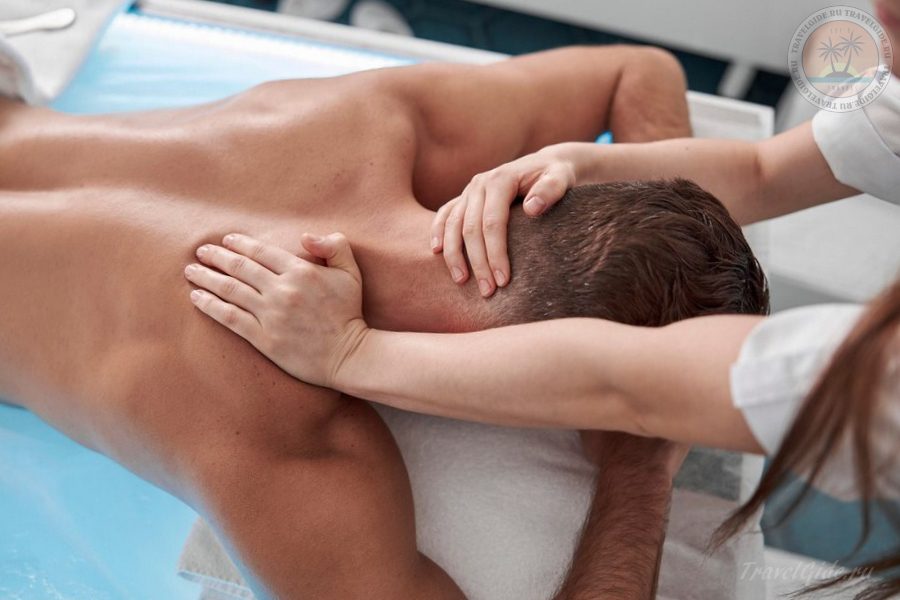
Профиль лечения в санаториях Крыма практически неограничен, а опыт, накопленный десятилетиями, обеспечит стабильный терапевтический эффект. Ингаляции, озонотерапия, высококлассный массаж, соляные пещеры, лечение грязями, водолечение, фитотерапия — это далеко не полный перечень того, что могут дать лечебно-профилактические учреждения полуострова.
Не мало санаториев имеют свои круглогодично функционирующие бассейны, что будет приятным дополнением для любителей плаванья и водных процедур. Безусловно, что бассейн не заменит плавания в море, но в них тоже есть определённая прелесть.
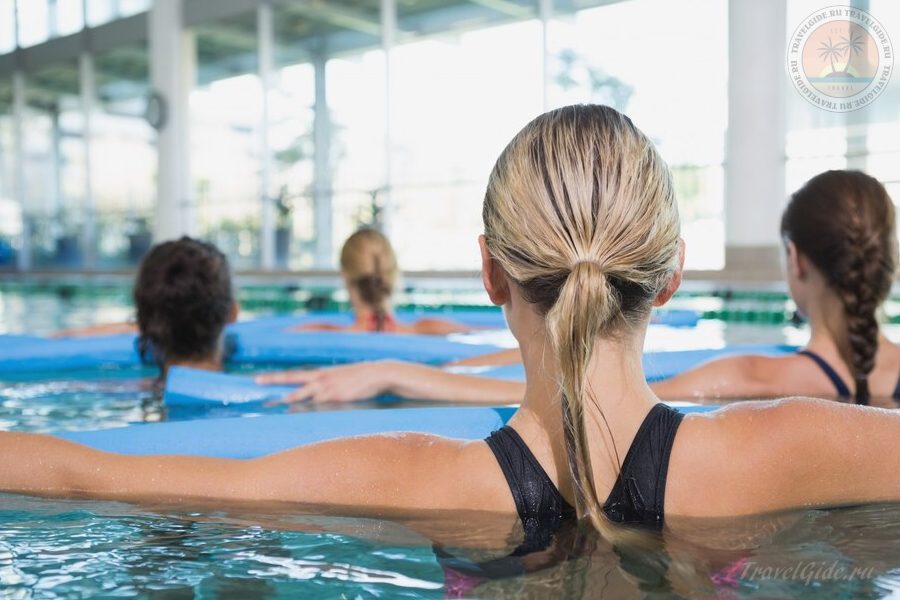
Давайте ещё раз вспомним про чудесный целебный Крымский воздух. И если вам повезло с погодой, то прогулки по заснеженным садам или просто улочкам, станут не только полезными в плане здоровья, но и приятным, неожиданным и красивым воспоминанием о вашем отдыхе.

Активный отдых: спорт и физическая нагрузка
Активный отдых, связанный с зимними видами спорта, — это то, что многие неожиданно открывают для себя в Крыму. Ангарский перевал и знаменитая гора Ай-Петри, пожалуй наиболее популярные объекты этого направления. Если выбирать между ними, то предпочтение конечно нужно отдать Ай-Петри. Здесь можно говорить о солидной лыжной базе, разнообразии трасс и возможностях полноценного отдыха, который понравится не только взрослым, но и детям.
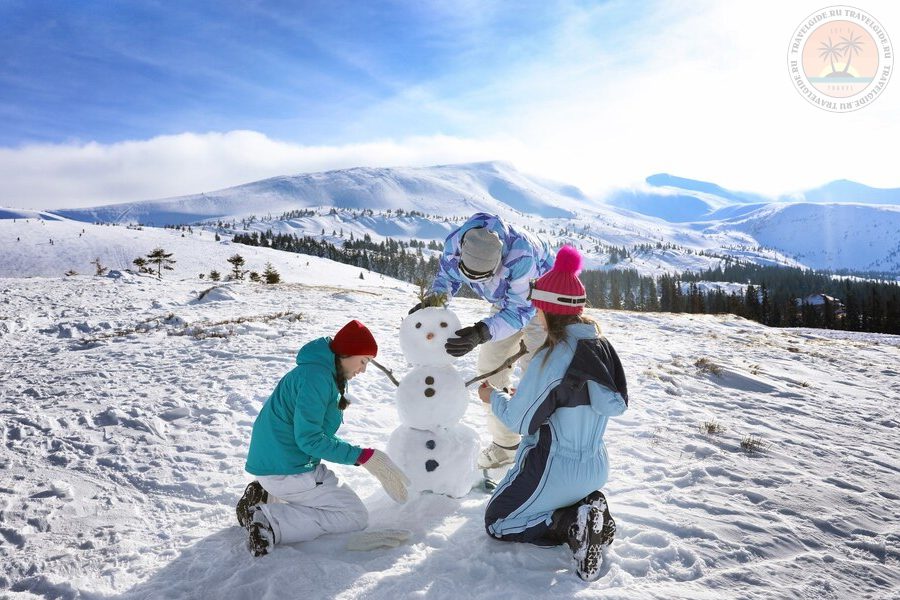
Сама гора Ай-Петри — одно из самых востребованных и посещаемых туристами и местными жителями мест. Например, в самом конце сентября 2023 года там прошел фестиваль «Ай-Петри Фест», в честь 520-летия Бахчисарая. Программа была просто отменной. Но и зимой гора не остаётся одинокой, в крайнем случае вы всегда можете прокатиться на тюбинге — здесь особых умений не нужно.
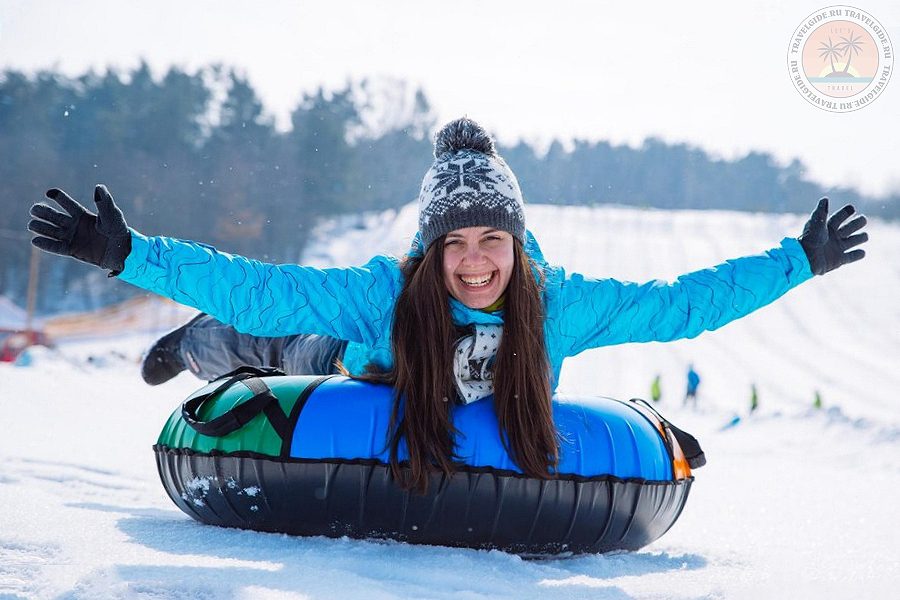
Кстати, зима на полуострове совсем не помеха для любителей поездок на квадроциклах или для тех, кто только захотел познакомиться с этим захватывающим развлечением.
Единственное отличие зимних поездок на квадроциклах от летних — это исключение отдельных горных маршрутов и уменьшение их общей продолжительности.
Однако в целом программа сохраняется и при желании можно запланировать остановку с приготовлением шашлыка и заезд в интересные места. Но многое в этом случае определяется конкретным месяцем и погодными условиями.
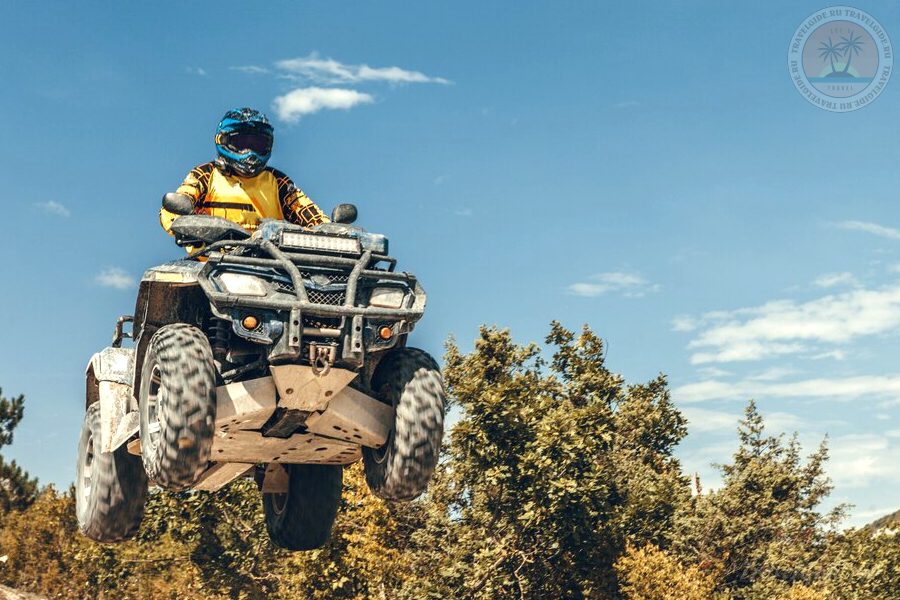
Исторический туризм: по волнам памяти
Исторический туризм в Крыму — одно из самых захватывающих занятий, которое может позволить себе путешественник или турист. Богатая история, полная невероятных событий, сражений, расцветов и закатов эпох, народов и правителей не оставит равнодушным никого. Чтобы хотя бы перечислить все исторические достопримечательности Крыма не хватит формата отдельной статьи. Поэтому остановимся на нескольких из них, несомненно достойных внимания.
Скальный город Чуфут-Кале
Чуфут-Кале – город легенда, который стоит особняком среди других скальных городов Крыма и может похвастаться своей относительно высокой сохранностью.
Город расположился на холмах, вблизи полувекового Бахчисарая. Сама природа и характерный ландшафт позаботились о защите поселения от вторжений. Оборонительные сооружения, которые были возведены в различные времена, сделали его непреступной крепостью. Предположительно начало основания поселения относится к VI — XI векам.
В самой древней части поселения посетители могут увидеть развалины мечети, а так же мавзолея, где захоронены останки принцессы и дочери хана Дюрбе Джанике-ханым. Первоначально в городе жили и татары и караимы, затем постепенно татары покинули город.
После 1870 годов караимы получили некоторые привилегии от Российской империи и также постепенно ушли из города, оставив сравнительно тяжелое существование в нём, перебравшись в Евпаторию и Бахчисарай.
Ханский Дворец
Дворец ханов – важнейший памятник, сохранившийся в Крыму, который представляет собой «живое» напоминание о могуществе крымских ханов. Он был построен в середине XVI века по повелению хана Адиль-Сачиб-Гирея.
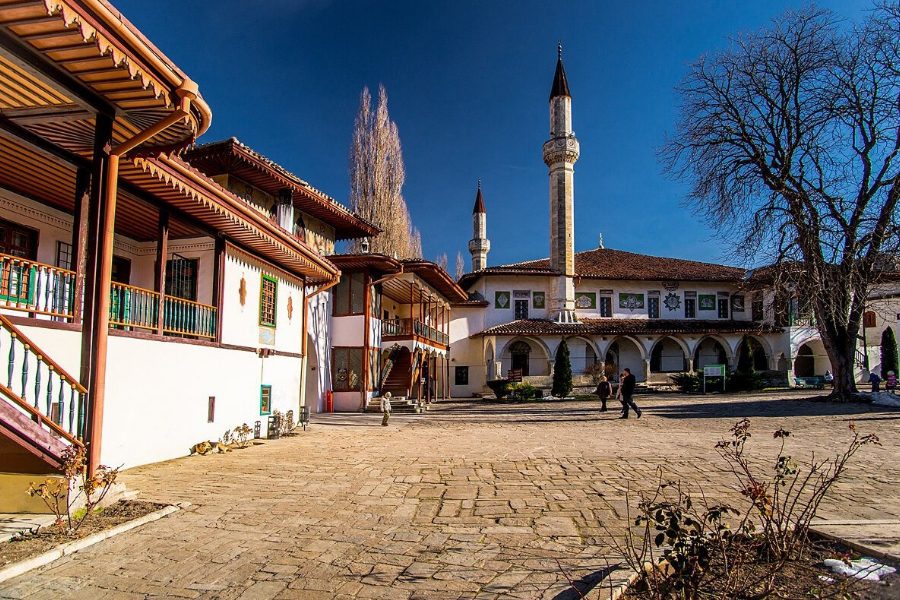
В наше время исторический комплекс представляет из себя площадь в 4 гектара, застроенную гостевыми домами, гаремом, мечетями, фонтанами. Следует сказать, что первоначально территория дворцового комплекса занимала площадь более чем в 12 гектар. К дворцу прилегали фруктовые сады, далее простирались луга, и всё это великолепие завершало городское кладбище.
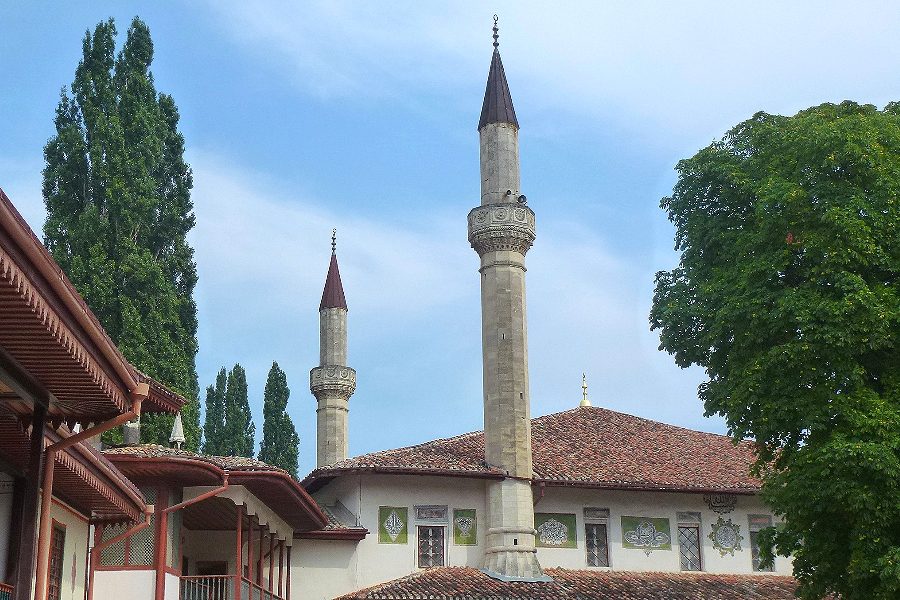
Самая крупная мечеть в Крыму — мечеть Ханджами была построена тоже здесь. Рядом с историческим зданием расположились два стройных минарета. Своей монументальностью мечеть обязана хану Селиамет-Гирею, который принял активное участие в её восстановлении после печально известного пожара 1736 года.
Ливадийский дворец
Название этого дворца происходит от греческого «liwadion», что означает лужайка, луг или поляна. В начале XIX века территория, где сейчас располагается дворец, находилась в собственности полковника греческого батальона Ревилоте, у которого её и выкупил граф Л. Потоцкий, основавший там своё имение.
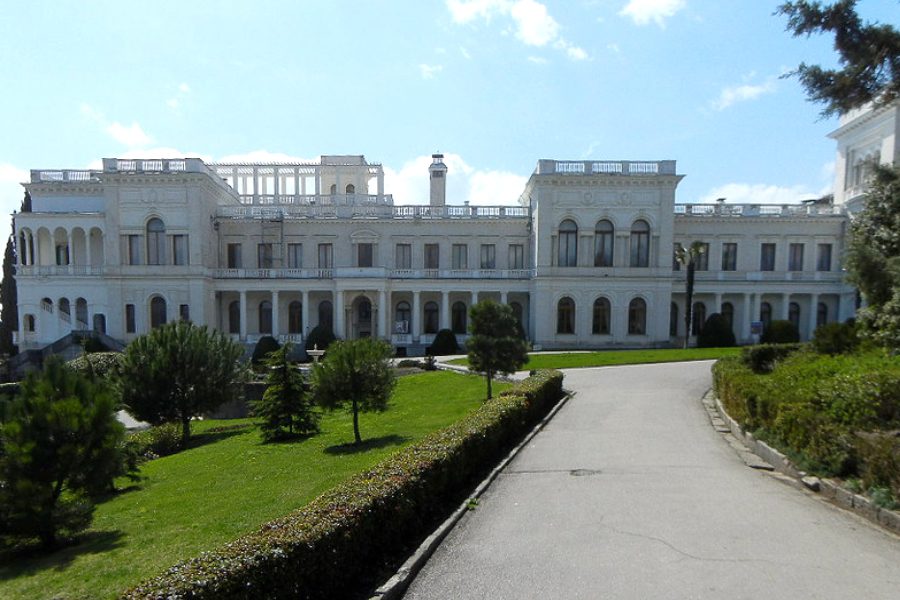 Лев Северинович Потоцкий пользуясь услугами именитого архитектора Филиппа Эльсона выстроил прекрасный графский дом, а «ландшафтный дизайнер» Делингер расширил парк.
Лев Северинович Потоцкий пользуясь услугами именитого архитектора Филиппа Эльсона выстроил прекрасный графский дом, а «ландшафтный дизайнер» Делингер расширил парк.
Но в 1860 году Ливадию у Потоцкого перекупила царская семья, которая и взяла в свои руки дальнейшее строительство и развитие комплекса. Архитектор из Италии по фамилии Монигетти перестроил дом бывшего владельца участка во дворец, а затем создал и малый дворец.
Начиная с 1910 году новым владельцем «Ливадийского Дворца» стал царь Николай II и вскоре на месте былого дворца возникла его летняя резиденция, которая стала называться Большим или Белым дворцом.
Дворец графа Воронцова
Это один из самых интересных дворцов Крымской Ривьеры, созданный в первой половине XIX века в трёх различных архитектурных стилях: готическом, мавританском и барокко. И всё же дворец знаменит потому, что он на самом деле является настоящей жемчужиной Большой Ялты.
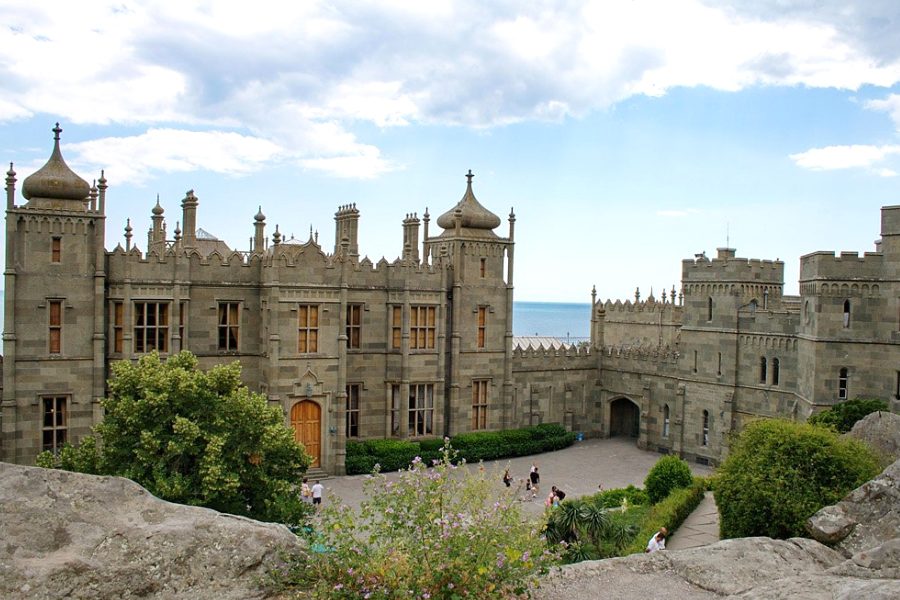
Руководил «проектом» британский архитектор Эдвард Блор, который известен тем, что достраивал Букингемский дворец для Королевской семьи в Великобритании. Впрочем проектирование дворца в Алупке прославило его отнюдь не меньше.
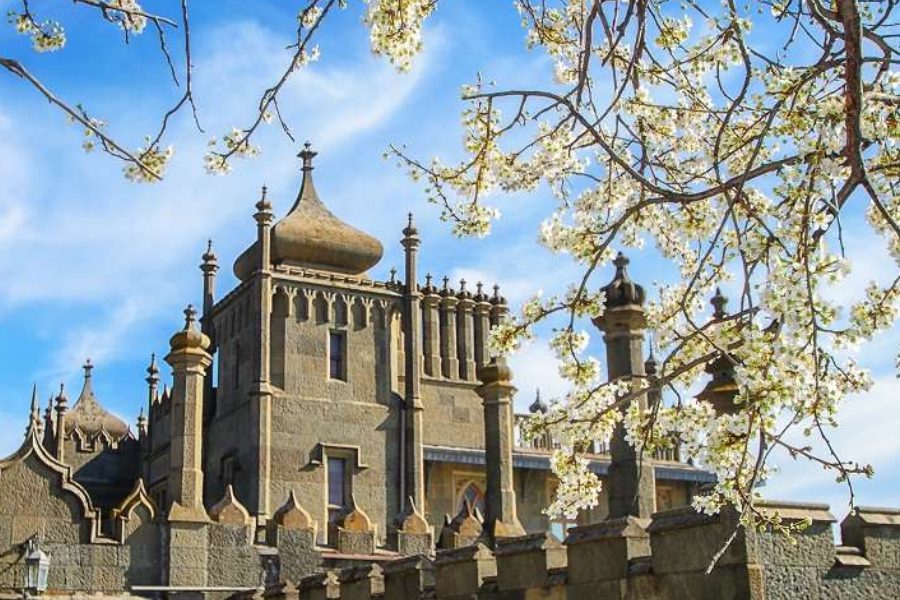
Фасад дворца, обращённый к морской глади выполнен в мавританском стиле. С другой стороны серо-коричневые, как будто пришедшие из средневековья, стены, форма оконных проёмов и характерные опоры отправляют нас прямиком в давние рыцарские времена.
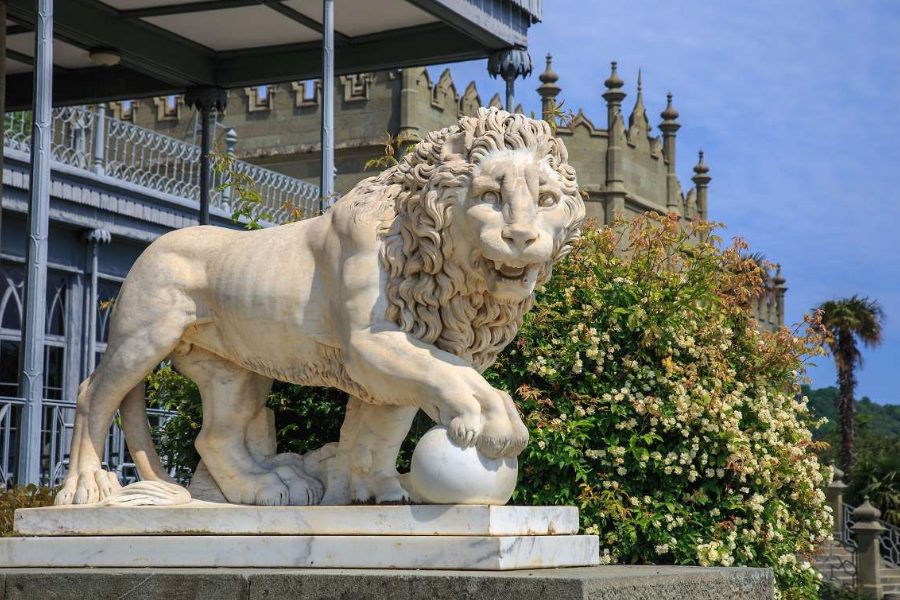
Генуэзская крепость
Другое название крепости — Судакская, и на сегодня она является наиболее сохранившимся памятником со времен процветания и благоденствия Итальянского государства под названием Генуэзская республика. Крепость в её общеизвестном виде была построена генуэзцами после их победы над войсками крымских ханов в 1371 году.
Крепость была возведена на горе высотой более 150 метров, которая направлена в Судакскую бухту. Следует заметить генуэзцы были далеко не первыми, кто обратил внимание на чрезвычайно «полезную» в стратегическом военном плане «высотку», которую крымские татары позже стали называть Дженевез-Кая или скала генуэзцев.
Крепость (в основном её стены) хорошо сохранилась, это не какие-то руины, поэтому она и привлекала к себе многих советских кинорежиссеров, которые умело использовали её колорит и реальный антураж для соответствующих киносъёмок. Более тридцати картин могут похвастаться видами Генуэзской крепости. Кто-то возможно вспомнит фильмы «Пираты XX века» 1979 года, «Овод» 1980 года, «Одиссея капитана Блада» 1991 года или «Одиночное плавание» 1985 года.
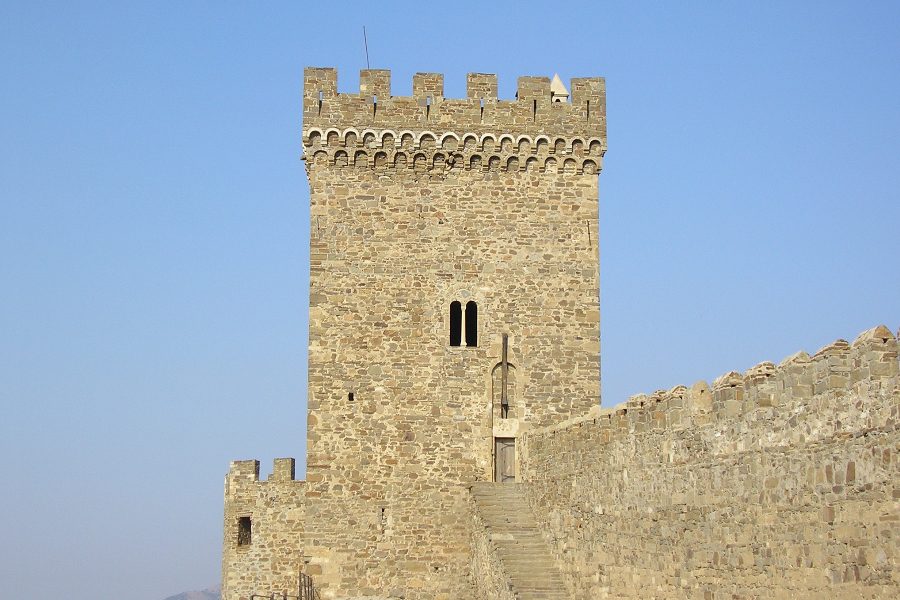
Сегодня Генуэзская крепость — это два комплекса стен, которые содержат четырнадцать оборонительных башен, мечеть, остатки строения церкви и цистерну, о назначении которой до сих пор спорят.
Ласточкино Гнездо
Замок Ласточкино гнездо находится на мысе Ай-Тодор недалеко от небольшого посёлка Гаспра, в 11 километрах западнее Ялты. Скала высотой около 40 метров под названием Аврора чем-то приглянулась немного поиздержавшемуся, но всё же богатому немецкому барону Штейнгелю, который сколотил своё состояние на торговле бакинской нефтью.
Замок был построен в 1912 году в модном тогда неоготическом стиле по проекту архитектора Леонида Шервуда. Но не ожидайте грандиозного размаха при встрече с замком. Он «миниатюрен», и его площадь не превышает 300 метров, так как его ширина приближается к 10 метрам, а длина к 20 метрам.
После революции 1917 года замок использовался как база для туристов, библиотека и наконец кафе, а в конце 20-х годов прошлого века мощное землетрясение обрушило небольшую часть опорный скалы. Этот факт ограничил доступ в замок вплоть до 1971 года.
Для тех, кто ценит потрясающие виды морских просторов, посещение этого, теперь уже исторического объекта, обязательно должно быть в плане поездки по Крыму. Тем более, что побывать на Крымском полуострове и не увидеть Ласточкино гнездо считается чем-то из ряда вон выходящим.
И в завершении посмотрите несколько фото сделанных в Крыму в 2022-2023 годах в период с конца ноября по конец февраля.
